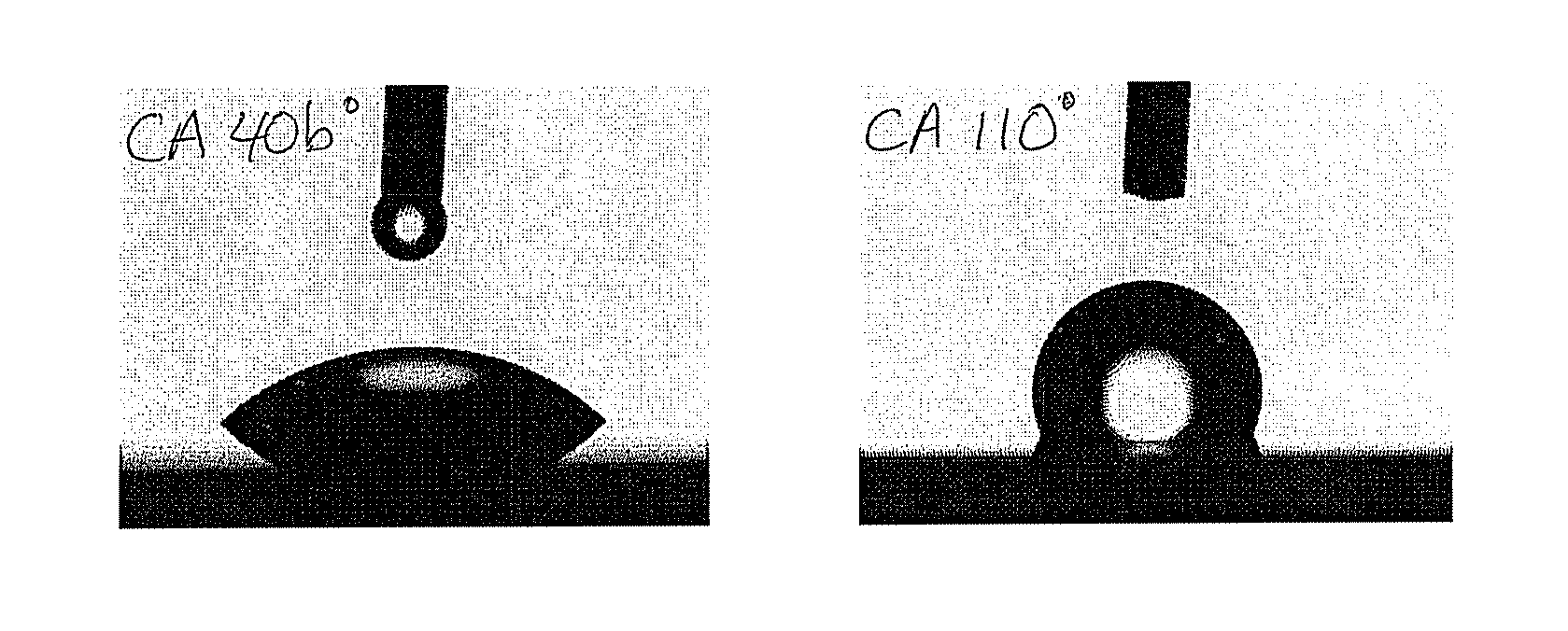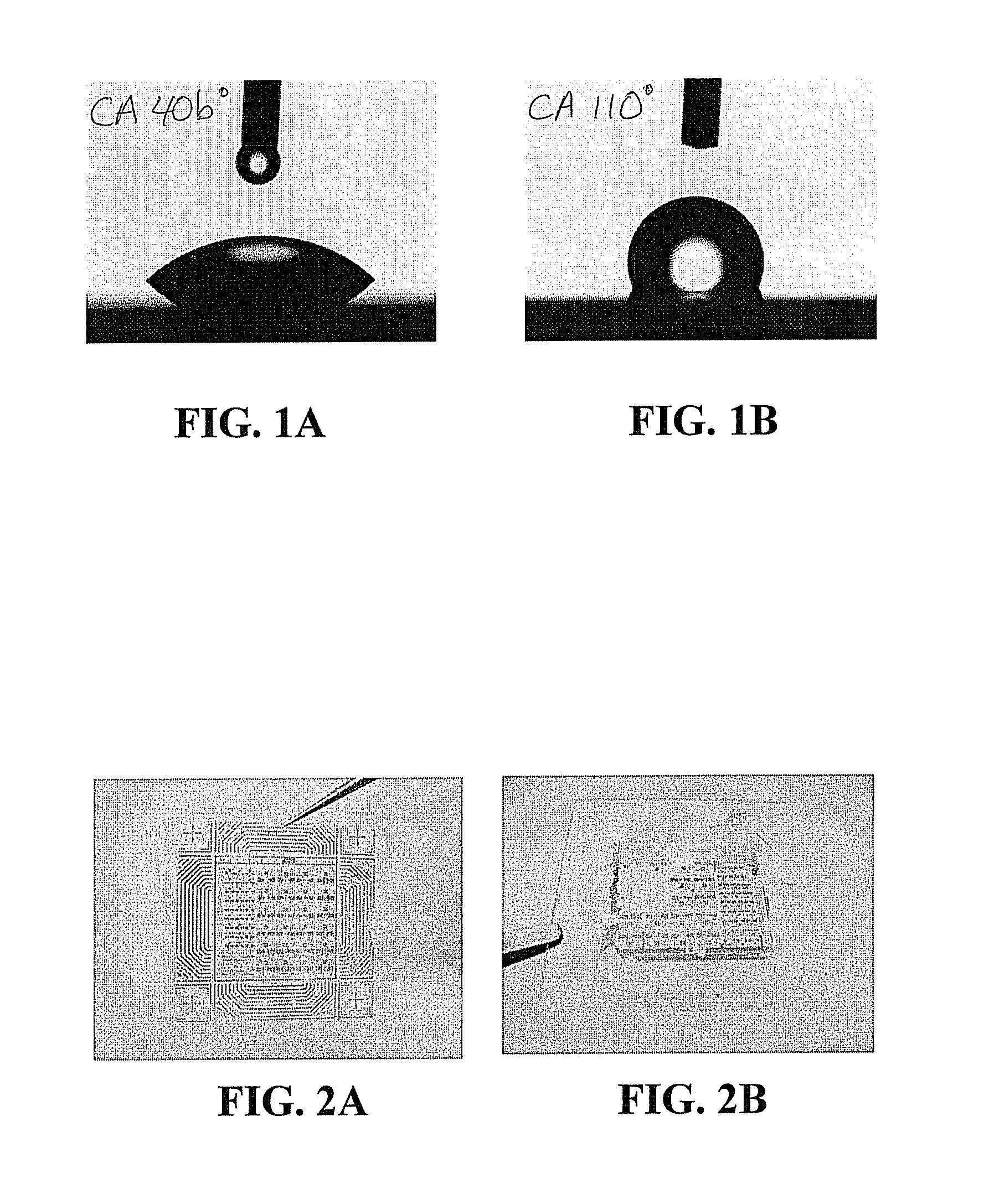Surface treatment of an organic or inorganic substrate for enhancing stability of a lithographically defined deposited metal layer
a surface treatment and metal layer technology, applied in the direction of decorative surface effects, cable/conductor manufacturing, decorative arts, etc., can solve the problems of reducing mechanical and electrical properties, partial peeling of patterned metal structures, and low adhesion to non-metal substrates, so as to improve the quality of metal films, improve morphological and mechanical properties, and general applicability
- Summary
- Abstract
- Description
- Claims
- Application Information
AI Technical Summary
Benefits of technology
Problems solved by technology
Method used
Image
Examples
Embodiment Construction
[0015]A hydrophobization process, particularly effective and usable onto substrates both of inorganic (silicon oxide, quartz, glass) and organic (polymeric materials such as, for example, polyethylene terephthalate (PET), polystyrene (PS), and polyethylene naphthalate (PEN)) is based on covalent chemical bonding (hereinafter called “silanization”) of ethoxy alkane silanes perfluorinated (such as for example those corresponding to the commercial label Fluorolink S10, distributed by Solvay Solexis) to hydroxyl groups present on the surface of the substrate. These commercial molecules are normally used in an alcoholic solution, and this makes it possible to use them over a large variety of substrates.
[0016]As will be demonstrated hereinafter, the stabilization effect that is obtained is particularly effective in fabricating metal structures patterned by microcontact printing. Nevertheless, as previously stated, other hydrophobization methods of the surface of substrates may be used, as...
PUM
| Property | Measurement | Unit |
|---|---|---|
| contact angle | aaaaa | aaaaa |
| hydrophobic | aaaaa | aaaaa |
| conductive | aaaaa | aaaaa |
Abstract
Description
Claims
Application Information
 Login to View More
Login to View More - R&D
- Intellectual Property
- Life Sciences
- Materials
- Tech Scout
- Unparalleled Data Quality
- Higher Quality Content
- 60% Fewer Hallucinations
Browse by: Latest US Patents, China's latest patents, Technical Efficacy Thesaurus, Application Domain, Technology Topic, Popular Technical Reports.
© 2025 PatSnap. All rights reserved.Legal|Privacy policy|Modern Slavery Act Transparency Statement|Sitemap|About US| Contact US: help@patsnap.com


